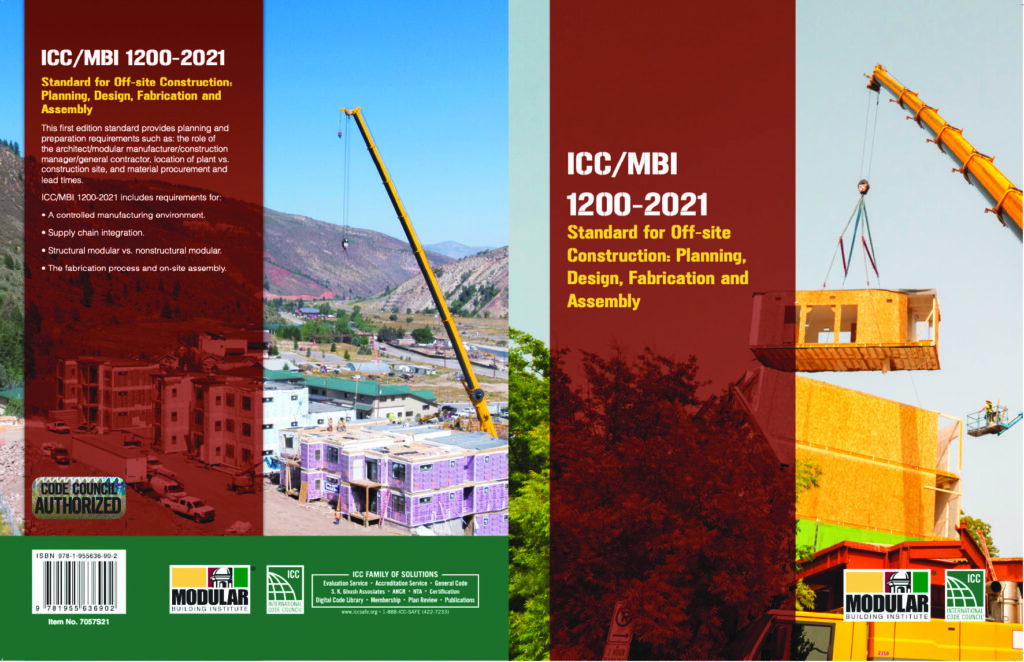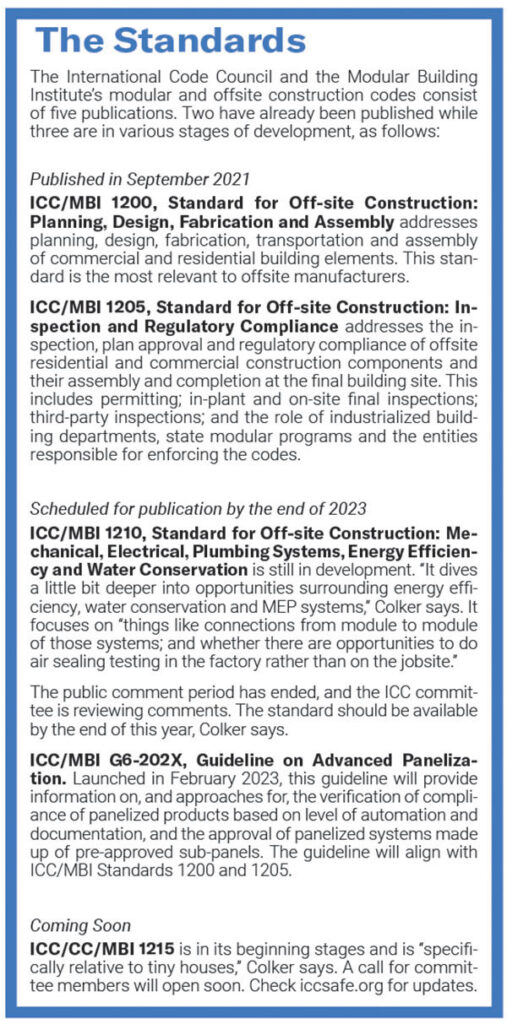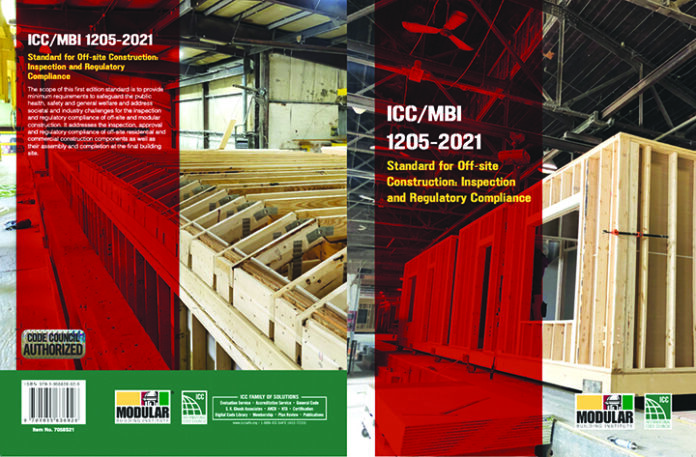Two standards have been published, while three are in process. The next task is to get jurisdictions to adopt them.
- Factory-built homes already meet code. The new standards are about verifying that, as well as about encouraging consistency among states.
- Consistent standards should make it easier for builders to use offsite construction methods.
- Two jurisdictions are fully on board at this point, but the ICC and the MBI are working with others to encourage adoption.
The International Code Council (ICC) and the Modular Building Institute (MBI) have recently initiated a push to support adoption at the state level of their new modular and offsite construction standards. The standards are outlined in five publications [see Box]. Two of them were completed and published in September 2021, and three more are in development.
The standards were developed by collecting best practices from different state programs and from manufacturers in other countries. The standards apply to componentized, panelized and modularized elements; they don’t apply to HUD Code Manufactured Housing.
Ryan Colker, ICC’s Vice President of Innovation, says that two jurisdictions have adopted the standards published in 2021. “Salt Lake City, Utah was the first to adopt them even before they were finalized,” Colker says. “And the Commonwealth of Virginia is [as of June 2023] in the process of adopting them.”
While Colker obviously wishes that more jurisdictions had moved as quickly toward adoption, he’s optimistic for the future. He believes that a dozen states will adopt the standards over the next couple of years.

The Verification Challenge
While most consumers and builders would agree that building codes are important for safety, “the code landscape is complicated,” Colker says. Even if a state adopts a code, it’s “up to the local government as to whether that code will actually be implemented.”
Most states in the US have statewide residential building codes, but some states leave codes up to individual jurisdictions. There are also some places in the US that don’t have any building codes at all. “About 30% of the construction that’s happening across the US is in communities that either don’t have a code or haven’t adopted a code since 2000,” says Colker. “The general public doesn’t think about it. They think their local officials have them covered.”
The good news for builders who opt to use factory-built components is that the processes used to manufacture them already ensure that they meet or exceed current building standards. For instance, Colker points to the fact that components are manufactured in a quality-controlled environment, which means that two-by-fours are not sitting outside getting rained or snowed on. In addition, modular homes are going to be driven down the highway, and to ensure that they arrive undamaged, they have to be designed somewhat more stringently than homes that are built on-site.
Factories that make modules or components also produce less waste than site builders.
The challenge, of course, is how to verify that factory-built components offer these benefits, and that they meet or exceed current code requirements. This is a particular problem with modular construction. Building codes are written from an on-site building perspective so a natural question, according to Colker, is, “how do you ensure that something built in the factory meets those same requirements, when what shows up to the jobsite has sealed walls and local code officials can’t see what’s going on?”
In fact, the standards are largely about verifying compliance. They set up a process for ensuring that code requirements are met in the factory, which includes specifying what needs to happen in the factory during quality assurance inspections. “That way, when something arrives on-site, the code official can determine that yes, this product has undergone a thorough review and inspection.”
The standards can also accommodate state-mandated variations in the review and inspection process. Some states require that factory inspections be done by state employees. Others allow inspections to be completed by approved third-party agencies. “The standards set up the process for this to happen,” says Colker. That includes specifying when inspections will happen in each state. It also includes specs for quality assurance manuals and other documentation, as well as certification standards for inspectors, which are also state-specific.
Consistency and Efficiency
Such jurisdictional variations can be a challenge. All factories want to be as efficient as possible, but when a factory in one locale is shipping products to building sites in different states or jurisdictions, discrepancies in requirements can create bottlenecks and inefficiencies.
ICC hopes that the new standards will encourage consistency among states. “The more consistency we can get across state programs, the more efficient it will be for manufacturers to be able to deliver to various states,” Colker says. “Being able to integrate consistency and efficiency into a best-practice approach to regulation will enable all of the things that we’re trying to do through offsite. That includes being able to deliver more affordable housing.”
ICC also expects that the availability of clear standards will encourage builders to migrate more towards modular and other non-site-built housing, which, according to The National Association of Homebuilders, only accounts for about 2% of current housing starts. Is that expectation realistic?
As an example, Colker says that the code’s adoption in Salt Lake City does seem to have moved the needle somewhat. “They’ve already seen an increase in ADUs being built offsite, and there’s more interest in the community in general in offsite construction projects,” he says. “There are also some developers looking at offsite for multifamily.”
Stacey Freed is a freelance writer and editor based in Pittsford, New York. She focuses on construction, remodeling, real estate, sustainability and wellness.








